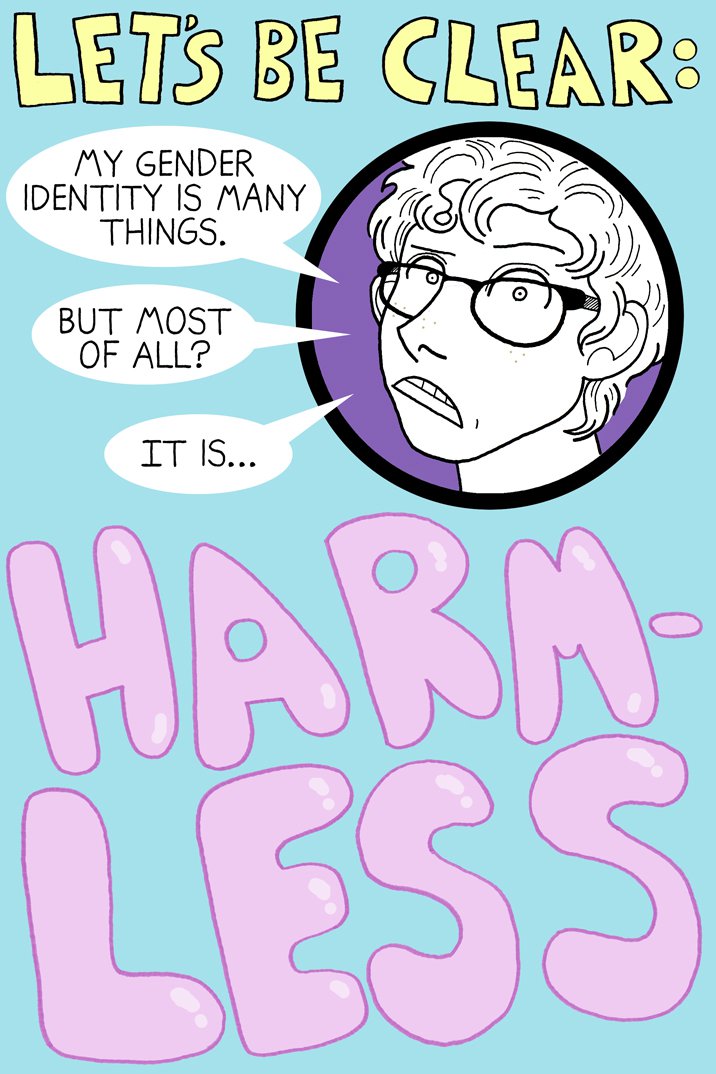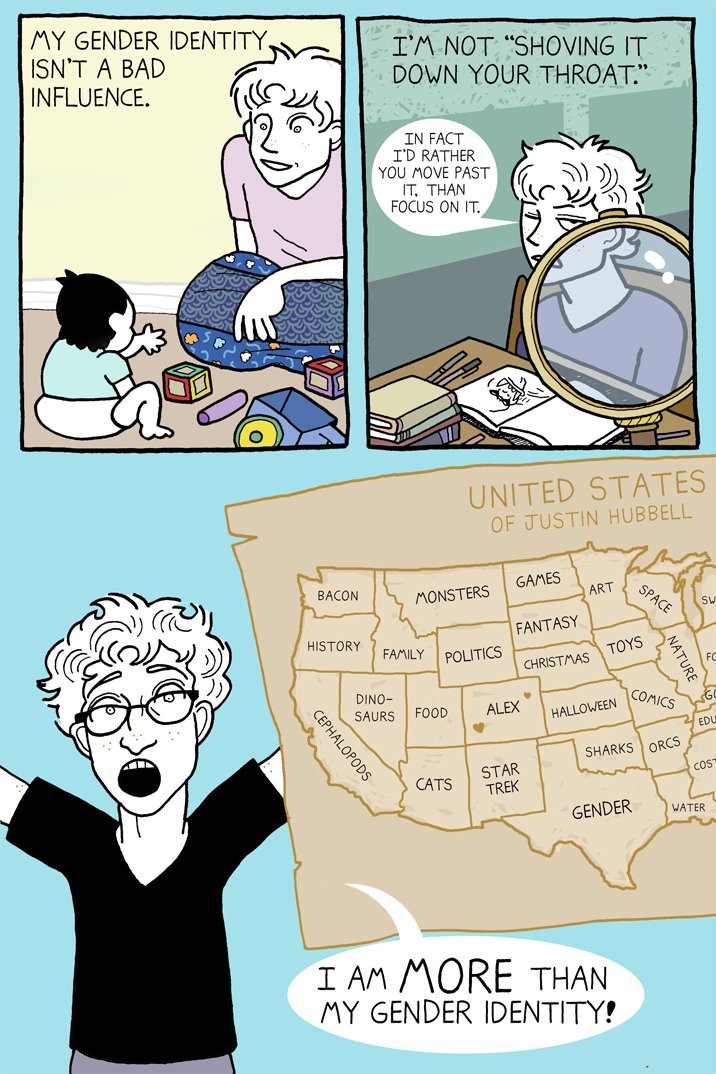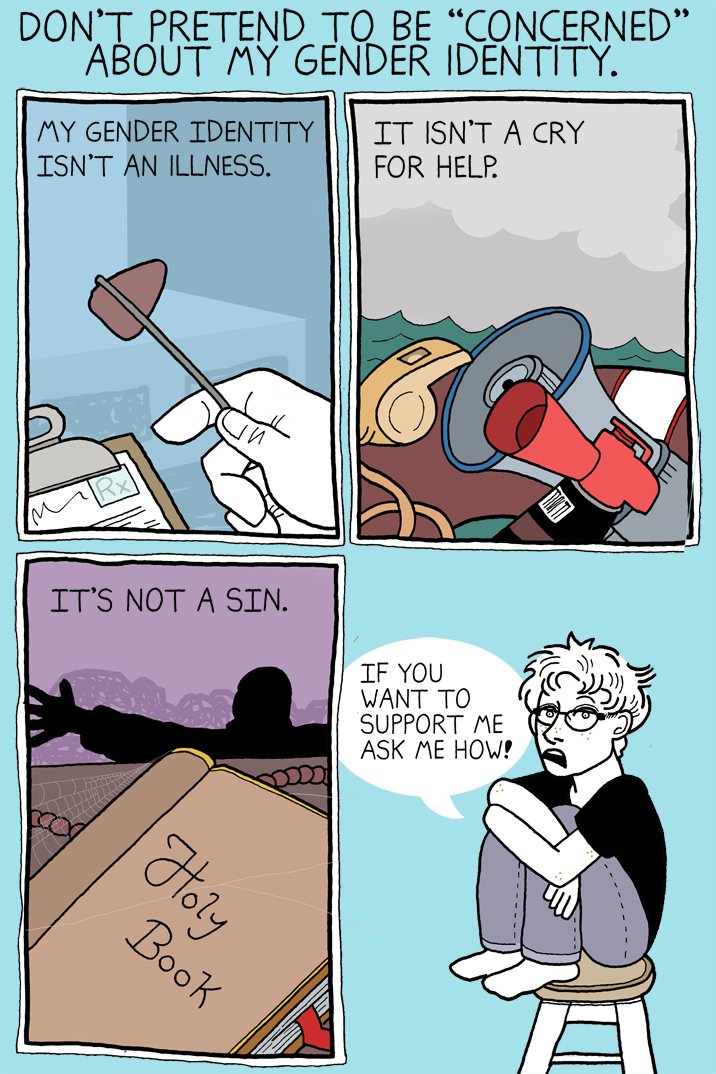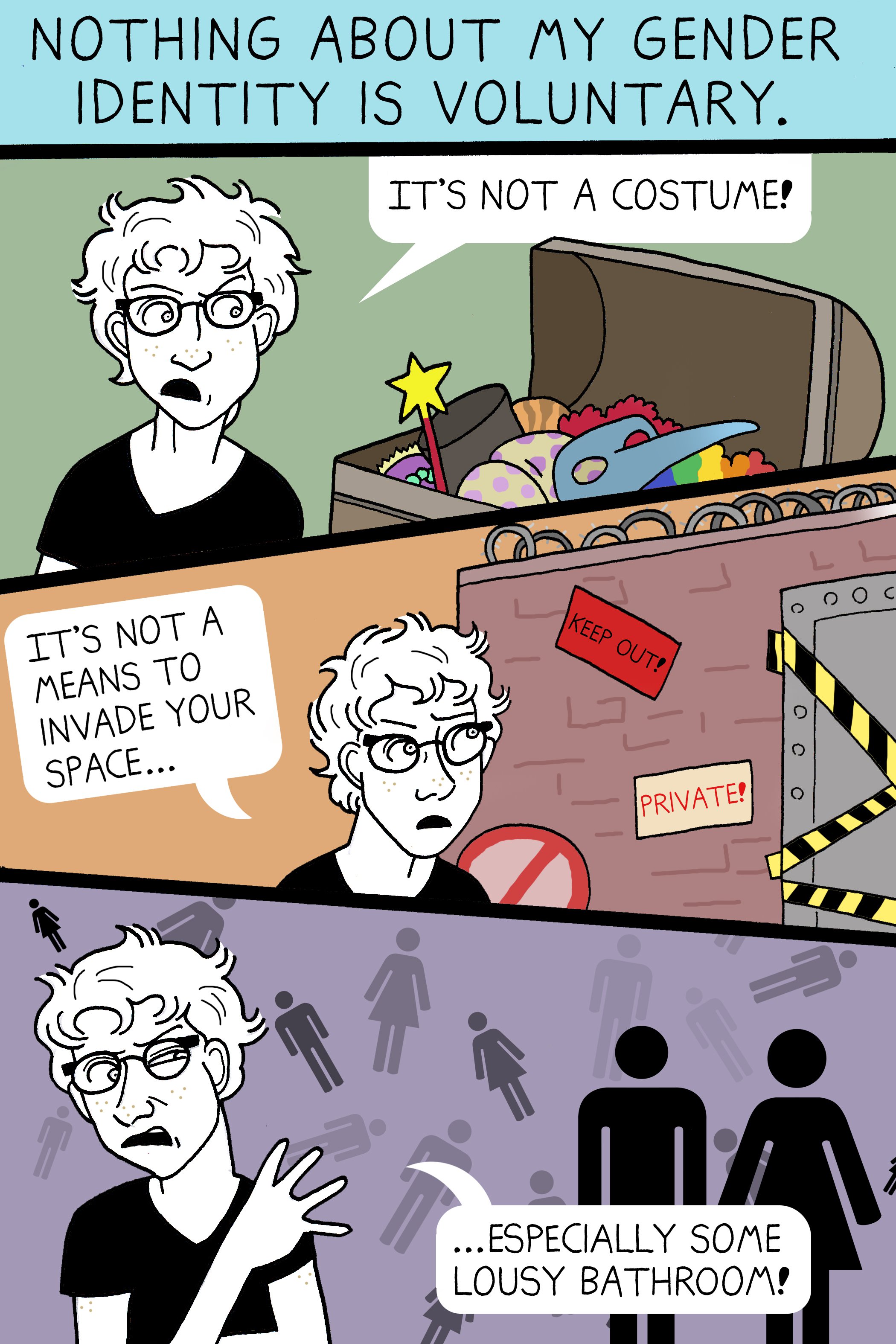This Comic Explains Why a Person's Gender Identity Isn't Voluntary

By:
One comic completely breaks down gender identity and dispels common myths about it for those who may still not quite understand what it means. The artist of the comic, which was originally published on Everyday Feminism, clearly explained why a non-conforming gender identity shouldn't concern anyone because it's "harmless."
 Justin Hubbell/Everyday Feminism - everydayfeminism.comJustin Hubbell/Everyday Feminism - everydayfeminism.com
Justin Hubbell/Everyday Feminism - everydayfeminism.comJustin Hubbell/Everyday Feminism - everydayfeminism.com
Illustrator Justin Hubbell, who uses "they" and "them" pronouns, explained in the comic why a person's gender identity shouldn't be feared by anyone.
 Justin Hubbell/Everyday Feminism - everydayfeminism.com Justin Hubbell/Everyday Feminism - everydayfeminism.com
Justin Hubbell/Everyday Feminism - everydayfeminism.com Justin Hubbell/Everyday Feminism - everydayfeminism.com
They also remind the reader that not conforming to a strictly male or female gender identity isn't an "illness," a statement which has been backed up by the American Psychiatry Association.
 Justin Hubbell/Everyday Feminism - everydayfeminism.comJustin Hubbell/Everyday Feminism - everydayfeminism.com
Justin Hubbell/Everyday Feminism - everydayfeminism.comJustin Hubbell/Everyday Feminism - everydayfeminism.com
They go on to explain how a person's gender identity isn't "a costume" or an excuse to sneak into a "lousy bathroom" - a likely reference to the controversial North Carolina bathroom laws.
 Justin Hubbell/Everyday Feminism - everydayfeminism.comJustin Hubbell/Everyday Feminism - everydayfeminism.com
Justin Hubbell/Everyday Feminism - everydayfeminism.comJustin Hubbell/Everyday Feminism - everydayfeminism.com
Hubbell wrote they are "open to questions" but they may not always know the answers. Because like anyone else, they're flawed - it concluded with one final message:
 Justin Hubbell/Everyday Feminism - everydayfeminism.comJustin Hubbell/Everyday Feminism - everydayfeminism.com
Justin Hubbell/Everyday Feminism - everydayfeminism.comJustin Hubbell/Everyday Feminism - everydayfeminism.com
Gender isn't black and white.
Many believe gender, like sexuality, is on a spectrum. "In our society, expressing your gender in a certain way ― say, wearing pants and wearing your hair short ― is often associated with a certain line, being either closer to that box of 'male' or that box of 'female.' But if we're seeing gender as a continuum, each person might place their location along this continuum slightly differently," Nicole Avallone, interim deputy director of programs and policy at the LGBT Community Center in New York, told ATTN: in May 2015.
In other words, gender isn't binary but for some that can be a hard concept to understand.
"Any time someone identifies as something other than male or female, we want to give them another box to fit in ― like 'trans' ― because we're more comfortable with that. You're either this or you're that, or you're something else. But when you do that, you still risk assigning certain expectations that you've created or that you've been told of what transgender is. Some people may say, 'I don't fit inside any one box,'" Avallone told ATTN:.
Check out the full comic at Everyday Feminism.
